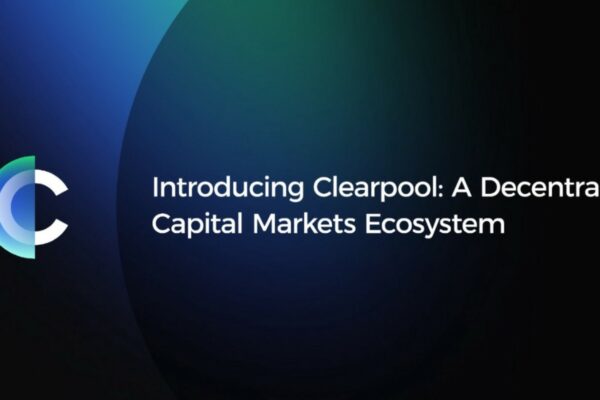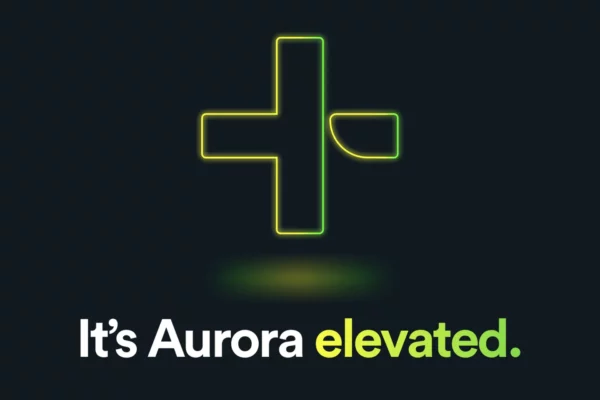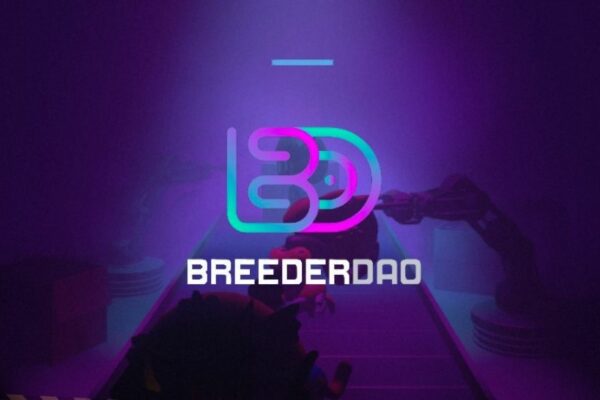Onomy Protocol
Onomy Protocol: Converging CeFi with DeFi through On-Chain Forex and Inter-Chain Trading
Capitalizing on the rise of stablecoins and decentralized finance, Onomy seeks to migrate the world’s foreign exchange market onto the blockchain. Its core products consist of an interoperable cross-chain network, a decentralized exchange with hybrid orderbook and AMM functionality, and a minting mechanism that issues stablecoins for major fiat currencies. In its May 2021 Litepaper, Onomy presents visionary ideas on how it can help facilitate the global currency market’s evolution into the virtual realm.
Since its founding in December 2020, Onomy has quickly expanded from a team of four to sixteen full-time members and several part-time contributors. The team members are well versed in mathematics and machine learning, and several are formally trained engineers. Founder Michael Bazzi, known as Lalo in the space, was first exposed to cryptocurrencies in his final year of college when he purchased Bitcoin in order to buy video game skins for certain in-game items. Since then, he has accumulated experience in traditional finance and technology, having held positions at Fidelity Investments and Microsoft’s cloud security team. His role at Microsoft opened the door to the enterprise side of blockchains. He formed strong relationships with technologists and crypto enthusiasts at other major firms like Google, Nvidia, and AMD. Together, they would collaborate on projects in crypto mining, private key management, and DeFi.
Lalo realized that large institutions identified immense potential in blockchain technology but were turned off by the risk: “Crypto and the infrastructure that it provides is truly revolutionary, the problem is the volatility scares off lots of people.” Therefore, it came as no surprise when stablecoins began seeing enormous success. The past year saw over $100 billion worth of stablecoins created. Having served enterprise clients, Lalo understood that superior user experience would be paramount in achieving wide scale adoption of any new technological framework. Inspired by the stablecoin growth trend, he and his team began to devise Onomy.
They structured the project around an ultimate thesis: “All of the world’s currency is going to be represented on-chain. That means more than the U.S. Dollar stablecoin, that means the Euro, the Yen, so on and so forth…and once you have all of those on-chain, where does that liquidity go? We saw the massive opportunity to build the de-facto, go-to Forex exchange for all of these stablecoins.”
The Onomy Ecosystem
Over $6.6 trillion is currently traded every day on global Forex markets. To gradually shift this activity into DeFi (Decentralized Finance), Onomy foresees a reserve-based transition of national currencies into on-chain stablecoins. The Onomy Reserve aims to be the world’s first Decentralized Reserve Bank by minting virtual stablecoins, known as Denoms, for any fiat currency, which are then collateralized with the network’s utility and governance token, NOM. Denom stablecoins will be counterfeit-proof and cryptographically secure while maintaining the stability and widespread recognition of fiat.
As a first step, Onomy has devised a proprietary decentralized exchange to accumulate liquidity and gain exposure to as many blockchain networks as possible. Lalo outlines his long-term plan as: “First is the foreign exchange which builds the necessary liquidity and users of the Onomy Ecosystem, next is the decentralized reserve bank. The ultimate vision culminates with the ability to create a supranational currency. If Onomy is successful in achieving mass adoption, what you’re able to do is to create a currency basket that mints one reserve stablecoin pegged to all the other stablecoins that exist.”
In addition to an extraordinary vision, Onomy differentiates itself in performance through an unwavering fixation on decentralization and user experience. The two principles synergize given that improving UX allows users to intuitively implement what they want, which in turn clarifies decentralized systems and promotes mass proliferation. To diminish risk and resource waste, all of Onomy’s development processes follow TLA+ specifications. This is a software blueprint that mathematically audits a project and ensures it works as intended before it’s actually implemented in a coding language. Lalo explains: “Working in DeFi where code is law…redundancy creates more strength.” TLA+ allows Onomy to quickly move from conception to production by slashing the time required for bug fixes and stress testing.
From becoming the world’s Decentralized Reserve Bank to contributing to a supranational currency, the Onomy team harbors lofty ambitions. However, they also understand the importance of methodical, step-by-step execution. The major challenge facing any new blockchain launch is liquidity. That’s why Onomy has strategically developed a decentralized exchange, bonding curve offering, and wallet application as initial steps in their broader plan.
The ONEX aims to integrate the world’s foreign currency exchange into the realm of virtual currencies. Onomy presents a multi-chain, fully decentralized exchange in which users can simply trade popular cryptocurrencies, as well as stablecoins once minted.
This DEX deploys a hybrid AMM & decentralized order book model that enables users to place limit, market, and stop orders like they would on traditional centralized exchanges. Since Onomy’s network is built on top of Cosmos, it takes advantage of the platform’s immense throughput and cross-chain interoperability to improve transaction efficiency. The ONEX is unique in that it incorporates an Automatic Market Maker that makes earnings as traditional market makers would. Other decentralized protocols like Uniswap and Sushiswap pay out a static fee to liquidity providers. Onomy eliminates orderbook fees by using the AMM to capture bid-ask spreads and share them with liquidity providers as earnings.
While DEXs such as dYdX offer a centralized order matching service, the Onomy DEX provides tools for users to run their own trading algorithms and bots using an API service that can be deployed on separate servers. In doing so, Onomy holds steadfast to its core tenets of decentralization and user experience. When utilized, the ONEX removes the unnecessary friction generally associated with trading currencies cross-chain. Users will no longer have to manage multiple browser extensions, access multiple CEX/DEXs, or use bridges. All these steps are automatically taken care of within the Onomy DEX. Compared to traditional foreign exchanges, ONEX improves upon transparency, accessibility, verifiability, and risk settlement by leveraging virtual currency properties.
Finally, Onomy Access is a multi-chain, non-custodial wallet that supports all of Onomy’s bridged chains. To be available on mobile, the application features a Single Sign On QR code scanning function that seamlessly enables users to sign in and manage all assets from one single wallet, as opposed to the current hassle of downloading various browser extensions per blockchain. Beyond simply sending and receiving funds, Onomy’s wallet allows users to stake, delegate, earn validator rewards, and vote on governance proposals. NFT collections may also be integrated.
Onomy boasts a suite of unique innovations that will be incorporated into current and future products. These include Natural Rights, a private key management solution that uses proxy re-encryption so users can access multiple private keys with a single QR sign-on, and securely enables device authorization of keys.
Equity is Onomy’s own consensus algorithm that implements byzantine fault tolerance to fairly order all transactions and leverage preferential ranked choice voting. It deters front-running and unlocks long-term scaling potential by empowering high-frequency Forex trading. The team may patent their Equity consensus protocol to gain stronger negotiation positions with institutions and central banks.

Lalo turned his world upside down for Onomy.
Mentha’s Outlook
Onomy’s core functions overlap significantly with our investment focus in cryptocurrency infrastructure and decentralized finance. Mentha’s considerable network of long-time financial industry stalwarts should also serve as a great value-add to the Onomy team.
In terms of blockchain infrastructure, Lalo follows a distinct approach. Having accrued ample experience in enterprise business, he is keenly aware of institutional hurdles to scalability: “You need to have certain credibility markers. We’re working with RedHat to certify software distributions. So when we go to a large investment bank or hedge fund, to have our software certified by a subsidiary of IBM gives a lot of credibility that many other projects might not be thinking of too much of, but we’re seeing a shift as the regulatory environment gets more involved. We’re positioning ourselves to make it comfortable for people to onboard. This may include compliance layers for institutions as well.” Some developers might assume that solid technology automatically translates into more users. However, Onomy knows the importance of institutional cooperation and has been prepared from day one.
The Onomy Protocol token NOM will be distributed following a bonding curve contract as opposed to static price sales. This unique approach is an efficient method to obtain deterministic pricing on acquiring NOM and bridging it into Onomy’s layer 1 chain. Supply may be diluted significantly if too many NOM tokens are sold at one given price. Instead, the bonding curve ensures that each subsequent token increases in price relative to the last. This builds up price pressure and generates token demand to match Onomy’s development progress. Therefore, incentives are aligned for organic expansion as Onomy must perform to attract users to the bonding curve while token holders are rewarded as the ecosystem grows.
The bonding curve will launch on Ethereum to provide users with greater convenience and accessibility. It also gives Onomy the chance to showcase the Gravity Bridge, which allows ERC20 assets to be transferred onto Cosmos-based blockchains. Onomy plans to augment bridging capabilities with the release of its Bridge Hub. The team is working to extend compatibility with EVM chains, and is in talks with multiple networks to build bi-directional bridges, thus becoming the de-facto way to enter and exit blockchain economies.
The platform encourages bridging and network participation through aggressive NOM staking rates, which rises to a peak of 100% ARR before dropping to level off around 10% APY. The rate offered is dependent on the amount of tokens staked. Additionally, Onomy is working on launching additional incentives to bridge, granting token holders unparalleled utility for NOM deployed on the ONET. As bridging increases, NOM prices are locked higher because supply is burned and the price floor rises.
By targeting the Forex market, the platform hopes to become a de-facto link between CeFi and DeFi. Lalo believes that traditional Forex companies are ripe for disruption and must adapt or continue to see market share taken from them as the stablecoin market cap grows.. The market may soon become segmented with platforms like Onomy servicing crypto-native users while existing Forex brokers continue to operate, prior to the eventual migration of all currencies on-chain. Onomy’s main concerns center around regulation, which is why Lalo prioritizes decentralized growth. The protocol should be DAO-governed and products must be non-custodial. Although, he believes a balance can be found and asserts, “Compliance layers may be offered to enable institutional capital to participate compliantly rather than being sidelined.”
While Onomy makes its mark in the crypto space, it must also navigate the traditional finance arena by collaborating with central banks and major institutions. Mentha can deliver tremendous value in this regard. Our deep history and connections in the financial industry allow us to provide Onomy with advisors of unparalleled expertise. These include: Danny Yee – a nineteen year veteran and pre-IPO general partner at Goldman Sachs, Hiroyuki Mukaibo – the former Head of Foreign Exchange at Citibank, Goldman Sachs, Credit Suisse First Boston and Lehman Brothers, and Ron DiRusso – the former Global Option Desk chief at Lehman Brothers and co-CIO of a FX derivative hedge fund. By leveraging Mentha’s traditional finance prowess across international markets, Onomy is well positioned to realize its grand vision for foreign exchange, intuitive cross-chain trading, and retail DeFi adoption..
Onomy Protocol’s current goals are to proceed with the Bonding Curve Offering (BCO), launch the cross-chain hybrid DEX, and release the iOS/Android versions of its DeFi Onomy Access wallet. Once these short-term infrastructures are properly implemented, we expect Onomy to effectively generate liquidity and begin cultivating adoption among crypto-native Forex traders.
Disclosure: Mentha Partners may hold an economic interest or serve in an advisory role to the project. This article does not constitute financial, investment or legal advice but is for informational purposes only.




